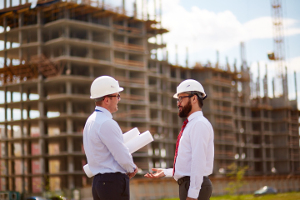3 Tips for Getting Specified on Multi-Family Projects
- < Product Manufacturers Who Dare to Be Dumb
- > Ron Blank & Associates and Sustainable Minds Announce Collaboration to Increase Specifi...
Historically, the LEED rating system is challenging for multi-family project. The single-family and office rating system was used for multi-family development, and this presented less opportunities for multi-family product manufacturers to get specified. But with LEED v4, multi-family specific credits are now included, creating more opportunity for specification. Sustainability may be trending, but this doesn’t mean it’s a fad. Green build and design is the future of multi-family, and this means LEED v4 projects will be increasing.
A recent online article in MultiFamily Executive magazine states that green living is a strong interest for today’s apartment residents. The large property management company AMLI surveyed 2,800 residents on the importance of sustainable living, with 59% of the participants under age 34, making them millennials. AMLI’s inaugural Sustainable Living Index showed that “84% of respondents said living in a sustainable or eco-friendly building is very important or moderately important to them, and 85% believe living in a sustainable home is beneficial to their health. Plus, 64% of residents said they’d pay more to live in a green community”. Obviously, this is just a small portion of the industry, and many things affect the success of the market. But overall, green is where it’s headed.
How Can You Stay in the Game?
- Know What the Trends Are—the standard multi-family construction is going to find it hard to hold its place in the market as the trends turn toward sustainability. A 2015 SmartMarket Report done in conjunction with the National Association of Home Builders (NAHB) found that the common thought is that 60% of new homes will be green by 2020. Overall, most builders have found that building green only increases construction costs by 5%. A lot of this additional cost is rooted in the mechanical and ventilation systems. The cost is worth it, because renters are looking more and more for a living space that supports the primal needs to eat, sleep, work, and play, all while supporting well-being by making the home community a place to relax and rejuvenate.
Some current trends include community-based living with communal areas like enhanced workout facility, yoga room, dog wash centers, a sauna in addition to pool and hot tub; community gardens; energy and water efficient features; technology friendly or already built to be a smart living space; and attention to eliminating noise pollution as much as possible. Also, particularly in urban communities or bedroom neighborhoods of those communities, the need for parking is lessening as more workers telecommute, rideshare, and use public transportation. As a manufacturer, you need to know how your product can benefit these trends. And while sustainability isn’t a trend that is going to disappear, it will evolve. Be on top of that evolution and think ahead to what’s coming next. - Position Yourself Well in the Marketplace—The rental market is competitive, with high rents and more demand than product available. Multi-family projects are in a great position to meet a need but need to do so quickly. This means manufacturers need to have their product and brand positioned in the sweet spot of the market place. You must know what your target market’s needs are and how your product and brand add value to that. This includes attendance at conventions AIA Conference on Architecture or Greenbuild, not just for exposure but also to see how your product compares to competitors and trends. Brand awareness is key as well, which attending conventions increases. But another way to bolster brand awareness and increase specification opportunities is by offering continuing education and LEED online education courses.
- Have Your Transparency Documents Ready—As discussed in a previous blog, 4 Transparency Documents That Help Specification on Both LEED v4 & WELL Projects, Health Product Declarations (HPDs), Environmental Product Declarations (EPDs), Life Cycle Assessments (LCAs), and Declare Labels all increase your chances of specification. For projects desiring LEED certification, these transparency documents can add points towards that achievement. Transparency documents had value to your product and increase the specification opportunities. This is true for all projects, multi-family or not. And if obtaining all of those is overwhelming, considering starting with an HPD first. Elixir Environmental is a great option for HPD consulting.
It’s Not Hard…but it’s Not Easy Either
Getting specified on a multi-family project reminds me of a quote from the movie, Robots. The main character, Rodney Copperbottom, is an inventor whose motto is, “See a need, meet a need!” As a product manufacturer, if you see a need (or a trend), meet that need and make yourself valuable in your target marketplace. Keep positioning your brand where it can be seen.
Have you worked in the multi-family market? Do you have thoughts on the evolving trend in the sector toward sustainable, community living?
For more information or to discuss the topic of this blog, please contact Brad Blank





